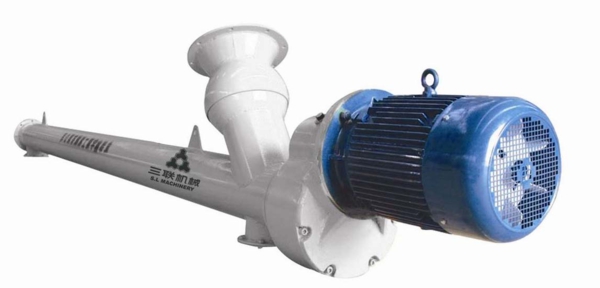One of the most reliable and cost-effective ways to handle bulk materials in the production of liquid and dry processing is to use screw conveyors. A screw conveyor is a very adaptable machine which can handle a wide range of different material types including dry powder, free flowing liquids and also materials which would otherwise be difficult to move such as biosolids.
There are many different types of screw conveyors suitable for different applications. The first type of screw conveyor, and the screw conveyor which is synonymous with all modern types of screw conveyors, is the Archimedes screw conveyor. Archimedes first used the device in the third century B.C. to remove water from ships and to irrigate farmland. This was based on a simple design with a hollow shaft with a spiral fixed to its outer wall. However it still worked using the same principle all screw conveyors use today, which is to convey the water, or other substance, from one location to another based on the incline plane theory.

It’s perhaps in the early 1800s that the screw conveyor started to be used commercially to transport grain in mills in the US. And the first feed mills used the screw conveyor process throughout the mill – a trend that is still in place today with many modern mills still adopting screw conveyors as their first choice to move bulk grain.
Moving bulk materials
Its ability to move bulk materials sets the screw conveyor apart from other solid and liquid transportation devices. With each revolution of the screw conveyor a fixed amount of the solid or liquid is transferred from one stage in the process to the next, so with each turn the material moves to a point further along the conveyor.
Screw conveyor systems are widely used in industry. Some of the applications in which they can be used include:
- Waste water treatment and processing
- Pulp and paper manufacture
- Food stuffs processing
- Chemical processing
- Rubber and plastics manufacture
- Stone movement and quarrying
- Petroleum refining
It’s their simple design which makes screw conveyors so popular in manufacturing. They are also easy to maintain and are easy to repair if damaged because of the low levels of complexity used in their design.
New screw conveyors
New improvements in screw conveyor design have heralded such things as the screw conveyor without a central shaft. In this type of design the screw sits in a trough and the drive shaft is connected to the shaftless spiral. This works particularly well in situations when the bulk material being transported is sticky, such as bread dough, and would otherwise stick to a centre shaft.
Gary Duffy wrote this article about screw conveyors on behalf of www.guttridge.co.uk.










Further to technological advances in screw conveying have been made to the screw (auger flighting) itself. Advanced research and designs have pushed the speed of conveying to even faster rates WITHOUT any costly upgrades to the motor drive system. Bottom line, by using advanced flighting the yields can be increased, plus physical wear which generates costly downtime, can be significantly reduced. For more information on auger flighting advances, view this YouTube video here –> http://goo.gl/GAUrZ